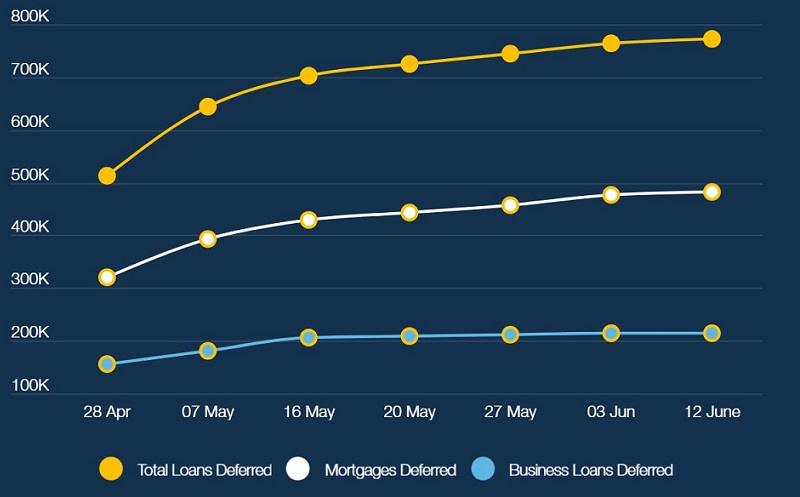Banks Give $211bn in Loan Deferrals
Banks have deferred the repayments of one in fourteen mortgages totalling more than $150 billion during the Covid-19 pandemic.
Figures released by the Australian Banking Association showed around 429,000 mortgages were deferred.
The figures take the total number of loans deferred to 703,000, a value of $211 billion including business loans.
Meanwhile new loans to owner-occupiers dropped 5 per cent further in April and new loans for investors also dropped 4.2 per cent, according to the Australian Bureau of Statistics.
The outlook for banks on lending was unclear as the Home Builder stimulus package, introduced at the start of June, was yet to affect lending figures.
In an earlier bid to curb the impact of Covid-19 on lending, the RBA cut the official cash rate to a historic low of 0.25 per cent in March, just as the unemployment rate started to rise.
Related: Home Builder—The Property Industry Weighs In
Total loans deferred during Covid-19

^Source: Australian Banking Association
Australian Banking Association chief executive officer Anna Bligh said banks have seen a historic surge in demand for deferrals over the last few months.
“Australian families who are financially affected by this crisis have had the breathing space they need with a six month deferral on their home loan repayment while they chart a path through to the other side of this downturn,” Bligh said.
Bligh said to combat the increased stress for home-owners and lenders alike, banks hired 1500 new staff and redeployed over 2200 staff to frontline areas such as call centres.
However the ability to repay loans could be on the mend with the total number of payroll jobs finally on the up, increasing by 1 per cent in May compared the job losses seen in April.
ABS head of labour statistics Bjorn Jarvis said some of the industries most heavily impacted by Covid-19 showed slight recovery in payroll jobs through May.
“The latest data showed that the total payroll job losses since mid-March were greatest in the week ending 18 April (8.9 per cent) and had recovered to a 7.5 per cent loss by the end of May,” Jarvis said.
“Payroll jobs worked by females increased by 1.4 per cent through May, compared with 0.4 per cent for males. However, total female job losses since mid-March were still greater (8.0 per cent, compared to 6.3 per cent for men).”















